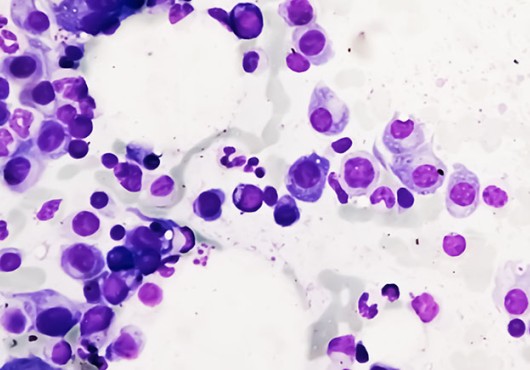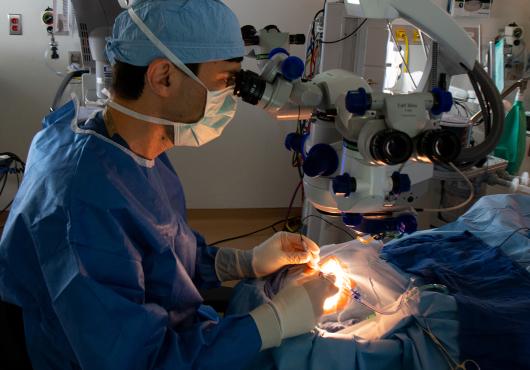
Person-to-person genetic differences may undercut the efficacy of gene editing or, in rarer cases, cause potentially dangerous off-target effects, according to a new study led by researchers at Boston Children’s Hospital, Harvard Medical School and the University of Montreal.
The findings, published this week in the Proceedings of the National Academy of Sciences, arrive as gene-editing techniques—using CRISPR-Cas9 and other technologies to edit DNA inside people’s cells—have begun to be tested in clinical trials. The study adds to evidence that the tools may need to be adapted to each patient’s genome to ensure there aren’t DNA variants in or near the targeted gene that would throw off the technology.
“Humans vary in their DNA sequences, and what is taken as the ‘normal’ DNA sequence for reference cannot account for all these differences,” said co-corresponding author Stuart Orkin, the David G. Nathan Distinguished Professor of Pediatrics at HMS and a researcher at Dana-Farber/Boston Children’s Cancer and Blood Disorders Center.
“We recommend that common variation be taken into account in designing targeting systems for therapeutic editing, to maximize efficacy and minimize potential safety concerns,” said Orkin.
The researchers analyzed 7,444 previously published whole-genome sequences. Based on a list of about 30 disease-related DNA targets that researchers are interested in altering through gene editing, the researchers made a second list of nearly 3,000 guide RNAs: bits of genetic code that have been developed to direct CRISPR-Cas9 enzymes to the right editing location on or next to the target, like the address on an envelope.
The team then looked to see whether any of the 7,444 genomes carried DNA sequence variants—including “letter changes,” insertions and deletions—in the areas the guide RNAs look for.
“If there are genetic differences at the site that CRISPR reagents are targeting for therapy, you are at risk for decreased efficacy or treatment failure,” said HMS MD-PhD student Matthew Canver, who conceived and led the study in Orkin’s lab at Boston Children’s. “A difference in just a single base pair can cause a decrease in binding efficiency due to a mismatch with the guide RNA.”
The team found that such occurrences in the genome are not uncommon; about 50 percent of the analyzed guide RNAs had the potential to be affected by variants at their target sites.
In a few cases, the team found genetic variants that cause other parts of the genome to more closely match a guide RNA and could draw the gene editor to the wrong place, resulting in a change to a gene or other DNA region that’s not meant to be targeted.
“In rare cases, there was the potential to create very potent off-target sites where CRISPR reagents could bind and cut where they’re not intended to,” said Canver. “If an off-target effect happens to be in, say, a tumor-suppressor gene, that would be a big concern.”
Although the study looked at CRISPR-Cas9 gene editing, the researchers believe their findings extend to other gene-editing tools such as zinc-finger nucleases (ZFN) and TAL effector nucleases.
“The unifying theme is that all these technologies rely on identifying stretches of DNA bases very specifically,” said Canver. “So, a variant that affects the target sequence could reduce guide-RNA binding. Variants can also lead to binding at new sites that could potentially cause harm.”
“As these gene-editing therapies continue to develop and start to approach the clinic,” he added, “it’s important to make sure each therapy is going to be tailored to the patient that’s going to be treated.”
Samuel Lessard of the Montreal Heart Institute and Université de Montréal was the study’s first author. Co-authors were Laurent Francioli, Jessica Alfoldi, Patrick T. Ellinor and Daniel G. MacArthur of Massachusetts General Hospital and the Broad Institute of MIT and Harvard and Jean-Claude Tardif and Guillaume Lettre of the Montreal Heart Institute and Université de Montréal. In addition to their Boston Children’s/Dana-Farber affiliations, Orkin and Canver are members of the Harvard Stem Cell Institute, and Orkin is also a Howard Hughes Medical Institute investigator.
The study was funded by Genome Canada and Genome Quebec, the Canada Research Chair Program, the MHI Foundation and the National Heart, Lung, and Blood Institute (P01HL032262) and the National Institute of Diabetes and Digestive and Kidney Diseases (P30DK049216, F30DK103359) of the National Institutes of Health.
Adapted from a Boston Children’s news release.





